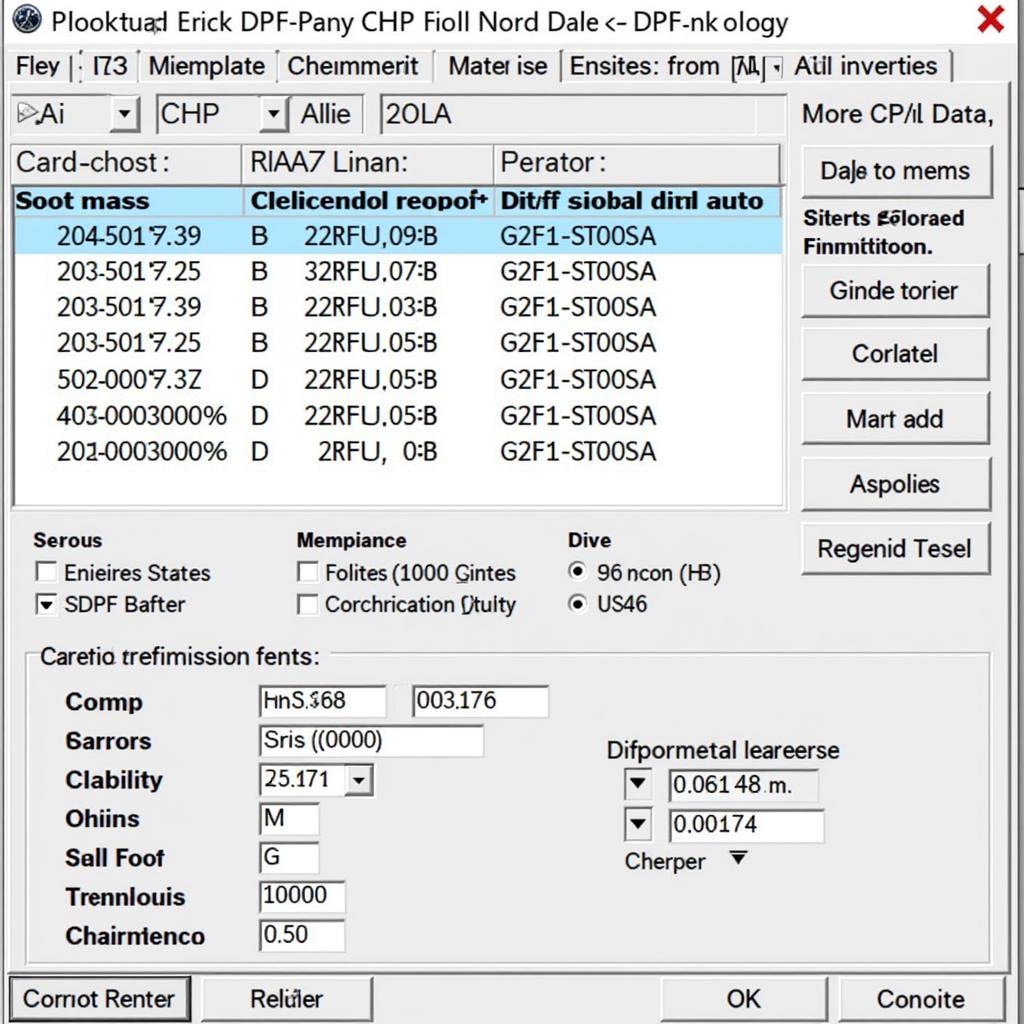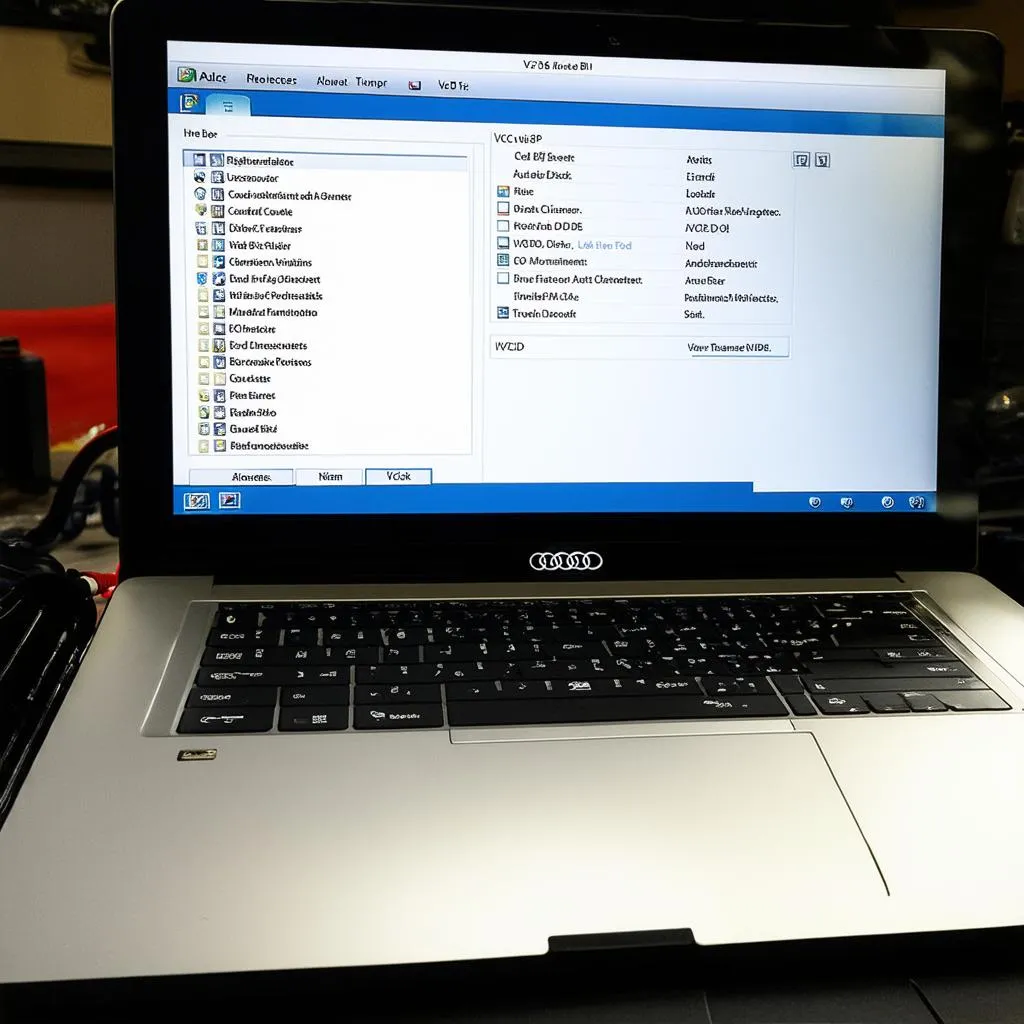Diesel particulate filters (DPFs) are essential components in modern diesel vehicles, designed to trap harmful soot particles and reduce emissions. Regularly checking your DPF’s status is crucial for maintaining optimal performance and preventing costly repairs. Using VCDS (Vag-Com Diagnostic System) software offers a powerful way to monitor and diagnose DPF issues accurately, giving you greater control over your vehicle’s health. This article will guide you through the process of performing a VCDS DPF check, understanding the data, and taking the necessary steps to maintain a healthy DPF.
Understanding the importance of a VCDS DPF check starts with recognizing the role of the DPF itself. The DPF captures soot from the exhaust gases, preventing it from being released into the atmosphere. Over time, this soot accumulates and needs to be burned off through a process called regeneration. If regeneration doesn’t occur regularly, the DPF can become clogged, leading to reduced engine performance, increased fuel consumption, and eventually, expensive repairs. VCDS allows you to access detailed information about your DPF’s condition, including soot levels, regeneration status, and any fault codes, empowering you to take proactive measures.
Performing a VCDS DPF Check: A Step-by-Step Guide
Connecting your VCDS interface to your vehicle’s OBD-II port is the first step in performing a DPF check. After establishing communication, select the appropriate control module for your engine. Within the module, navigate to the “Advanced Functions” or “Measuring Values” section, where you’ll find specific DPF-related data. This data can include soot mass, differential pressure, regeneration status, and fault codes. Interpreting this data correctly is key to understanding your DPF’s health.
Interpreting VCDS DPF Data: Soot Levels and Regeneration Status
Soot mass, often measured in grams, indicates the amount of soot accumulated in the DPF. High soot levels suggest that regeneration is needed. Differential pressure across the DPF is another critical parameter, reflecting the filter’s blockage. A large pressure difference signifies a clogged DPF. The regeneration status shows whether the DPF is actively regenerating or if a regeneration is pending. Finally, fault codes provide specific information about any DPF-related problems.
 VCDS Software Interface for DPF Check
VCDS Software Interface for DPF Check
Common DPF Problems and Solutions
Several issues can affect DPF functionality. Frequent short trips, low-quality fuel, and faulty sensors can all contribute to DPF problems. Common symptoms include reduced engine power, warning lights on the dashboard, and increased fuel consumption. Solutions range from forced regenerations using VCDS to replacing faulty sensors or even the DPF itself.
Forced Regeneration with VCDS: A Powerful Tool
VCDS allows you to initiate a forced regeneration of the DPF. This can be useful if the vehicle’s automatic regeneration system isn’t functioning correctly or if the DPF is nearing its blockage limit. However, it’s essential to perform forced regenerations carefully, following the proper procedures and ensuring the vehicle is in a suitable environment.
Preventing DPF Problems: Proactive Maintenance Tips
Regular maintenance is crucial for preventing DPF problems. Using high-quality fuel, avoiding short trips whenever possible, and addressing any engine issues promptly can help maintain a healthy DPF. Regularly checking your DPF status using VCDS allows you to catch potential problems early and take preventative measures. Similar to vcds check dpf status, monitoring the soot level can help predict when a regeneration is required.
The Importance of Regular DPF Checks
“Regular DPF checks using VCDS are an essential part of maintaining a modern diesel vehicle,” says John Smith, a seasoned automotive diagnostician. “Just like you check your oil level, monitoring your DPF status can help prevent costly repairs and ensure optimal engine performance.”
Conclusion: Keeping Your DPF in Top Shape with VCDS
Regular VCDS DPF checks empower you to take control of your diesel vehicle’s health. Understanding your DPF’s status, performing necessary maintenance, and addressing potential issues promptly can significantly extend the lifespan of your DPF and prevent expensive repairs. By leveraging the power of VCDS, you can ensure your diesel vehicle runs smoothly and efficiently for years to come. how to check dpf soot level vcds is a good start for understanding this process.
FAQ
- How often should I perform a VCDS DPF check?
- What are the signs of a clogged DPF?
- Can I perform a forced regeneration myself?
- What should I do if I see a DPF fault code?
- How can I prevent DPF problems?
- What is the cost of DPF replacement?
- Is it safe to drive with a clogged DPF?
Common Scenarios and Questions
-
Scenario: Dashboard warning light related to the DPF.
-
Question: What does this warning light mean and what should I do?
-
Scenario: Reduced engine power and increased fuel consumption.
-
Question: Could a clogged DPF be causing these issues?
-
Scenario: Unsuccessful automatic regeneration.
-
Question: How can I force a regeneration using VCDS?
For further assistance, consider these resources: vcds service regeneration of particulate filter and vw t5 speed limiter removal vcds. You may also find vcds oil quality helpful.
Need more help? Contact us via WhatsApp: +1 (641) 206-8880, Email: CARDIAGTECH[email protected], or visit us at 276 Reock St, City of Orange, NJ 07050, United States. Our customer service team is available 24/7.

